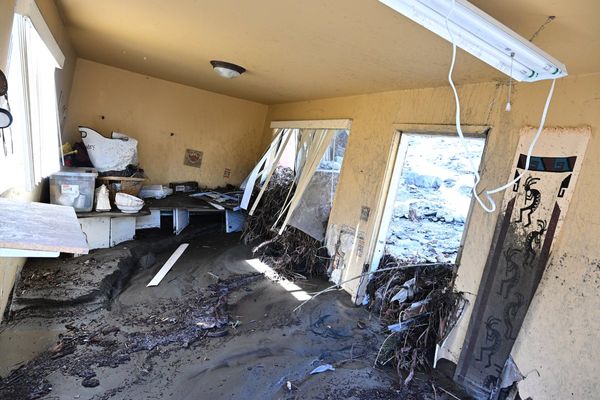
At 51, I took my body’s capabilities for granted. I ran for much of my 30s and 40s, then, when depleted hormones sapped my energy, I moved to hiking, Hiit sessions, weights and yoga.
I felt occasional twinges, but nothing concerning, until one twinge became an ache that turned, in spring 2023, into a searing, stop-you-in-your tracks pain through my lower back, groin and knee. No specific onset event, just a body that said: no. My GP thought sciatica and referred me to a physiotherapist, who issued exercise routines to do for eight weeks. A month later I couldn’t walk or even sit in some positions. Sleep was impossible. My dog, used to hours of cross-country japes together, regarded my shuffling, groaning doppelganger with concern. An osteopath advised an MRI scan and X-ray. These revealed severe, widespread cartilage tears and cysts in my right hip: a diagnosis of osteoarthritis.
Back at the GP, I was referred to an NHS hip specialist. Four more painful weeks passed before the appointment. I was offered a steroid injection, being too young by at least 10 years for a hip replacement, but this would give only partial, temporary relief. I was also genetically unlucky – a shallow hip joint was exacerbating the wear and tear. A second and third opinion said only a hip replacement would deal with the problem.
Relieved to have answers and access to private healthcare, I booked a full hip replacement operation for 1 November. I was told to consider how accessible my bed and bathroom might be post-op. My husband fitted toilet-seat raisers and handrails and made plans to work from home as much as possible. We joked about my hospital booklet with 75-year-olds on the cover: now 52, I was years younger than the average patient. But I didn’t mind because I was counting down the days to being back in sports leggings. The consultant said the joint could last for 20 years, and there was nothing to stop me running again.
I woke up from the op to find I’d been given a general anaesthetic. The surgical team explained that I’d complained, when the banging and crashing started. For the first 12 hours after the op, I waited for the feeling to come back into my legs. Then it did, and I fell into pain like I have never known. On the upside, I had a very small, neat wound, which didn’t cause me any problems at all. Within another 12 hours, I was encouraged to get up and walk up and down the corridor, to reduce stiffness and swelling around my new hip. My blood pressure, always very low, was even lower after the general anaesthetic, and I couldn’t get up without fainting. On day two I tried again, with two walking sticks. I could move, but I couldn’t blot out the crunching, grinding sensation in my new joint. Nonetheless, I went up and down the hospital stairs, and was duly discharged. The 15-minute car ride home was unspeakable torment.
For the next two weeks, I had to take painkillers every four hours in order to be comfortable enough to do gentle walks and modest physio exercises aimed at reducing stiffness and swelling. The swelling was such that I had a Kardashian-model thigh and bum cheek on the right in weird contrast to the usual on the left. To sleep I had to lie on my back, propped up by pillows, to minimise the risk of dislocating my new joint, for six weeks. Nights were very bad. There were many tears.
Then, slowly, there was progress: my walks got a bit longer, from 10 to 20 minutes. I was nowhere near the park yet but I figured out how to put my own socks on, using a rolled-up magazine. The physio exercises got easier. The swelling went down. The pain didn’t go away, but I was getting an hour’s sleep here and there between dusk and dawn. I realised at around week three that I’d gone a day without needing painkillers. At five and a half weeks I took the surgical socks off, driven finally mad by them. The same day, I risked sleeping on my non-operated side, a pillow between my legs. I got three hours and it felt like three days.
At six weeks, I could walk for nearly an hour, use a cross-trainer for short periods and do lunges and squats. I could walk unaided, though slowly, but felt vulnerable on wet and icy pavements. I got tired quickly. I still have back, groin and knee pain. My consultant says it might take a while before that subsides. I am trying to focus on the fact that I have prospects now, at least.
On Christmas Day I went for an hour-long cross-country walk with my family. At 10 weeks I slept for five hours straight.
At three months, my physiotherapist said it was time to practise jumping – on the spot, from side to side, forwards and backwards. I anticipated pain that didn’t come. Next time we’re doing hopping, and the time after that, we’ll put them together. Hop plus jump equals run. I can’t quite believe it.







